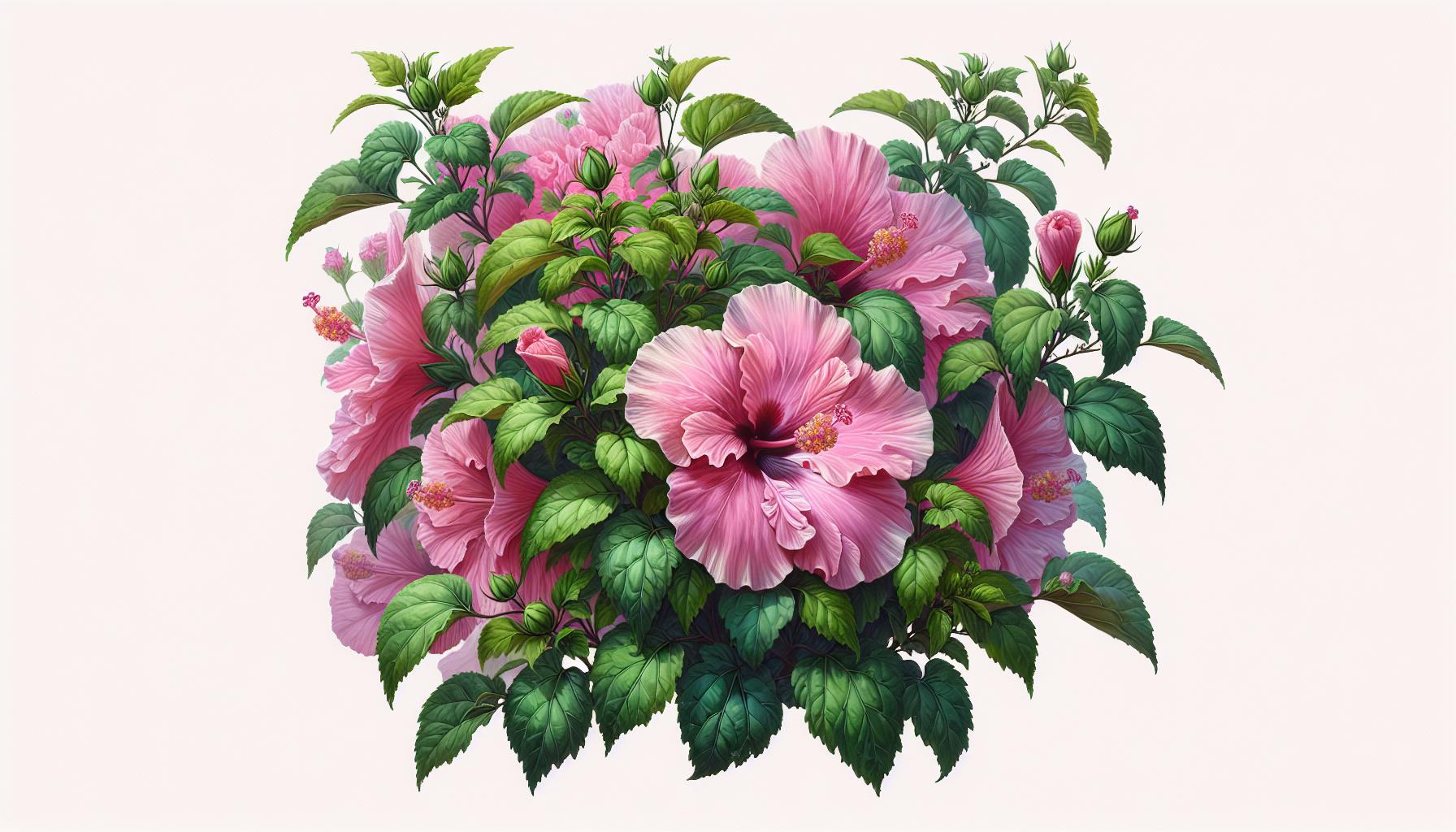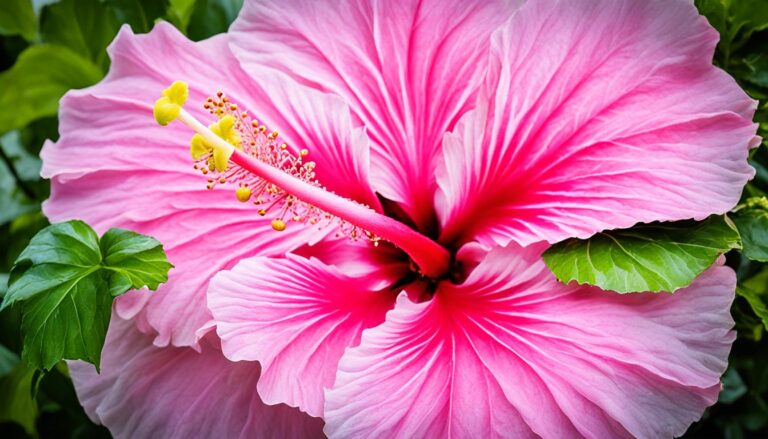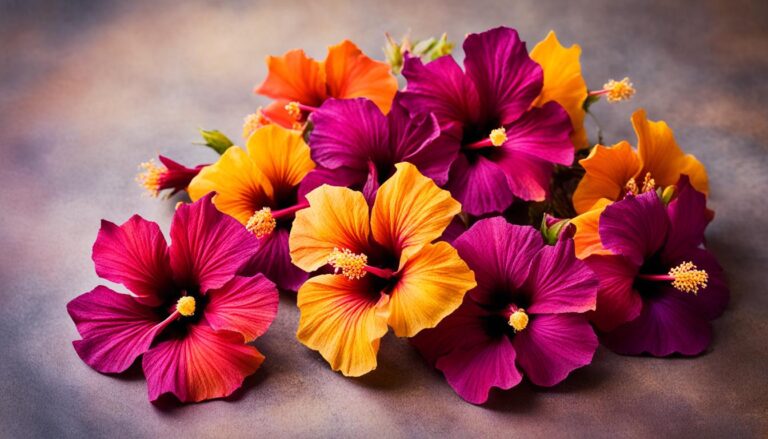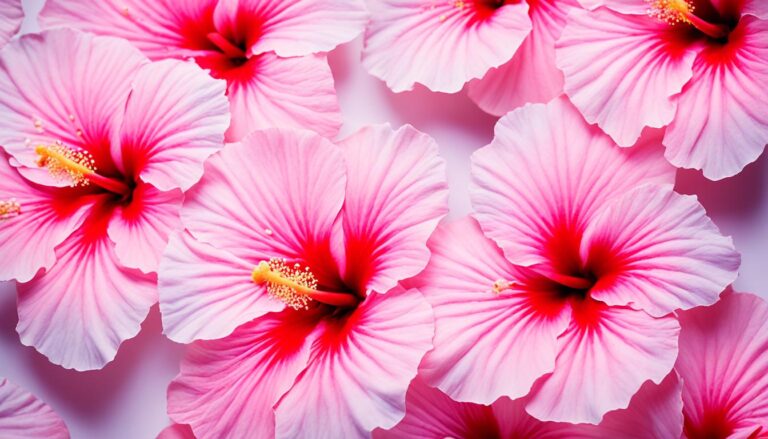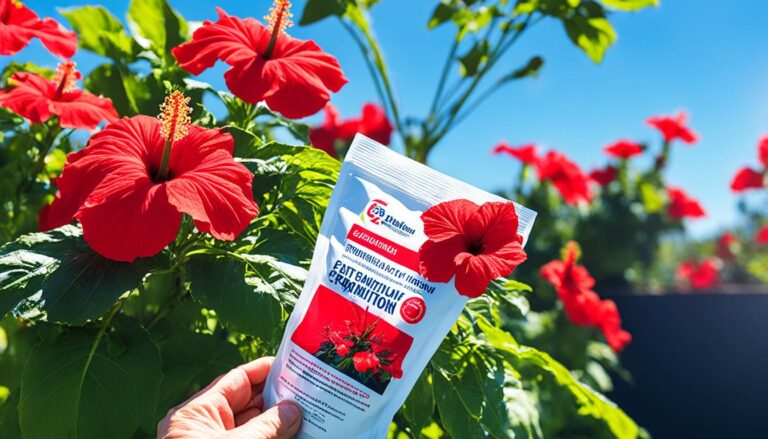Seminole Pink Hibiscus: Grow & Care Guide for a Vibrant Garden
In the world of vibrant blooms and captivating flora, the Seminole Pink Hibiscus stands out as a true gem. With its lush, eye-catching petals and robust growth, it’s no wonder this plant has captured the hearts of gardeners and flower enthusiasts alike. We’re diving into the allure of this stunning flower, exploring what makes it a must-have in any garden.
The Seminole Pink Hibiscus isn’t just a feast for the eyes; it’s a plant with a story, a symbol of delicate beauty and strength. Whether you’re a seasoned gardener or just starting to dip your toes into the world of horticulture, understanding the charm and care of this hibiscus variety can transform your garden into a picturesque haven. Join us as we uncover the secrets behind growing and maintaining these breathtaking blooms.
Key Takeaways
- The Seminole Pink Hibiscus stands out for its large, radiant pink blooms and robust growth, making it a staple in gardens for both aesthetic appeal and biodiversity enhancement.
- Ideal growing conditions include full sun exposure, well-draining soil with a pH range of 6.5 to 7.5, and protection from strong winds, ensuring the plant thrives in USDA Hardiness Zones 9 through 11.
- Proper planting techniques involve selecting the right location, ensuring adequate sunlight, amending soil for optimal drainage and fertility, and careful watering practices to establish a strong root system.
- Ongoing care requires consistent moisture management, balanced fertilization, regular pruning for shape and health, and protection from pests and diseases using gentle, plant-safe treatments.
- The Seminole Pink Hibiscus can be utilized in diverse landscaping designs including as a solitary specimen for focal points, for creating vibrant hedging and borders, and in container gardening for space-limited areas.
- Addressing common challenges such as pests, diseases, and weather-related issues with proactive and proper care ensures the long-term health and beauty of Seminole Pink Hibiscus in any garden setting.
Key Features of the Seminole Pink Hibiscus
Building on the allure that the Seminole Pink Hibiscus brings to gardens and its essence as a symbol of beauty and resilience, we delve into its key features. Understanding these aspects will enlighten both the novice and the experienced gardener in nurturing this captivating flower successfully.
Appearance and Flowers
The Seminole Pink Hibiscus is renowned for its large, radiant blooms that serve as the focal point in any garden. These flowers showcase a stunning pink color that can vary in intensity, from soft pastels to more vivid hues. Each bloom comprises five petals that often feature a slightly ruffled edge, adding to their visual appeal. The flowers are not only a feast for the eyes but also attract a myriad of pollinators, such as bees and butterflies, making the Seminole Pink Hibiscus an essential plant for maintaining biodiversity.
Growth Habits and Size
Typically, the Seminole Pink Hibiscus exhibits a robust growth habit, thriving to become both bushy and tall. Gardeners can expect this plant to reach heights of up to 8-10 feet and spread out to about 4-6 feet wide, conditions permitting. It’s a fast grower, which means gardeners can anticipate a relatively quick coverage, making it an excellent option for those looking to fill spaces or add privacy in their gardens. Pruning can also encourage a denser growth pattern, allowing for a customization of the plant’s shape according to the gardener’s preference.
Hardiness and Climate Requirements
The Seminole Pink Hibiscus shines in its ability to adapt to various climates, flourishing in USDA Hardiness Zones 9 through 11. This resilience makes it suitable for a broad range of garden settings, but it especially thrives in warmer, more tropical environments. The plant requires a good deal of sunlight to bloom prolifically, with a preference for full sun exposure. It’s also crucial to provide it with well-draining soil to prevent root rot, a common issue in water-logged conditions. While it can withstand minor cold spells, prolonged exposure to temperatures below freezing can damage the plant. However, with appropriate care and situational awareness, gardeners can ensure the survival and prosperity of their Seminole Pink Hibiscus plants, even in less than ideal climates.
Planting Your Seminole Pink Hibiscus

Building on the foundational appreciation of the Seminole Pink Hibiscus, its beauty, and its growth requirements, let’s dive into the practical steps for planting this enchanting variety. Success begins with location, extends through the soil it’s planted in, and culminates with planting techniques that encourage vibrant growth.
Choosing the Right Spot
Identifying the perfect spot for your Seminole Pink Hibiscus forms the cornerstone of garden planning. These plants flourish under full sun exposure, needing at least six hours of direct sunlight daily to produce their hallmark large pink blooms. Consider the trajectory of sunlight in your garden to ensure these needs are met throughout the day. Equally important is choosing a location that shields the plant from strong winds that could damage its tall stems, especially in areas reaching up to 8-10 feet. Proximity to a south-facing wall or fence can offer both sun and protection, creating an ideal growing environment.
Soil and Water Needs
Seminole Pink Hibiscus thrives in well-draining soil, a critical factor to prevent root rot and other water-logged conditions. Opt for loamy or sandy soil types, amending with organic matter to enhance drainage and fertility. A soil pH range of 6.5 to 7.5 is optimal, supporting nutrient uptake for healthy growth.
Watering practices play a pivotal role as well. While establishing the plant, ensure consistent moisture to encourage root development. Once established, Seminole Pink Hibiscus exhibits moderate drought tolerance but benefits from regular watering during dry spells. Ensuring a balance—providing adequate water without over-saturating—is key to vibrant flowers and robust health.
Planting Tips
When it comes time to plant, preparation paves the way for success. Dig a hole twice as wide and just as deep as the root ball of your Seminole Pink Hibiscus. This encourages roots to expand into the surrounding soil, establishing a strong foundation. Incorporate a generous amount of compost into the bottom of the hole and mix well with the native soil to promote fertility and drainage.
Position the plant so the top of the root ball sits level with the ground surface, then backfill with the amended soil, gently tamping down to remove air pockets. A thorough initial watering helps settle the soil around the roots, reducing transplant shock. Mulching around the base, while avoiding direct contact with the stem, conserves moisture and regulates soil temperature, further supporting plant establishment.
Following these planting guidelines, your Seminole Pink Hibiscus is set on a path toward thriving health and bountiful blooms, enhancing the garden with its unique charm and resilience.
Caring for Your Seminole Pink Hibiscus

After establishing the Seminole Pink Hibiscus in the garden, ensuring its long-term health and vibrancy becomes our next priority. This section delves into the care specifics: from watering guidelines to fertilization and pruning techniques, and finally, protecting these stunning blooms from pests and diseases.
Watering Requirements
The Seminole Pink Hibiscus thrives with consistent moisture but detests waterlogged roots. During the initial weeks post-planting, we ensure the soil remains evenly moist to establish a strong root system. Afterward, adjusting the watering frequency becomes key, especially in hotter climates where evaporation is rapid. On average, watering once a week suffices, but during periods of extreme heat or drought, increasing the frequency ensures the plant remains hydrated. Importantly, we always check the soil moisture by touching; if the top inch feels dry, it’s time to water.
Fertilizing and Pruning
Supplementing the Seminole Pink Hibiscus with the right nutrients ensures prolific blooming and robust growth. We opt for a balanced, slow-release fertilizer, applying it in early spring as new growth appears, and again in mid-summer to support continued flowering. Over-fertilizing, however, can be detrimental, leading to lush foliage at the expense of blooms. Pruning is equally critical for maintaining shape and encouraging bushier growth. We prune in late winter or early spring, removing any dead or weak branches and shaping the plant to promote air circulation and sunlight penetration, crucial for reducing disease risk and fostering healthy blooms.
Protecting from Pests and Disease
Despite its resilience, the Seminole Pink Hibiscus can fall prey to pests and diseases if not properly cared for. We remain vigilant for signs of aphids, spider mites, and whiteflies, common pests that feast on the sap of the plant. Gentle solutions, like neem oil or insecticidal soap, effectively address these infestations without harming beneficial insects. Diseases such as root rot and fungal infections are best prevented by ensuring good drainage and avoiding overcrowding. Should any disease symptoms appear, we act swiftly, often removing affected parts and applying appropriate fungicides as recommended. Regular inspections and prompt intervention are our best strategies for keeping the Seminole Pink Hibiscus healthy and blooming beautifully.
Landscape Uses of Seminole Pink Hibiscus

Following an in-depth exploration of caring for the Seminole Pink Hibiscus, we delve into the various ways these vibrant blooms can enhance any landscape. Their versatility not only lies in their care but also in their application in different landscape designs. From standing solo to forming aesthetically pleasing borders, the Seminole Pink Hibiscus serves multiple roles in garden and landscape settings.
Solitary Specimen
Placing a Seminole Pink Hibiscus as a solitary specimen instantly elevates the garden’s focal point. This technique leverages the plant’s striking pink blooms and lush green foliage to draw the eye, creating a captivating visual interest. Ideal for garden centers or as a statement piece in a front yard, a solitary Seminole Pink Hibiscus, when placed strategically, can anchor the landscape design, providing a burst of color and texture amidst the greens. The plant’s height and spread make it perfect for this role, ensuring it’s visible from a distance and appreciated in its full glory.
Hedging and Borders
Utilizing the Seminole Pink Hibiscus for hedging and borders offers both privacy and beauty. Lined up along the edges of a property or used to define different garden areas, these plants can create soft, natural barriers that are far more appealing than traditional fences. The dense foliage and continuous blooms from spring to fall ensure a lively border full of color and life. Additionally, planting them as hedging attracts beneficial insects and pollinators, adding another layer of interaction to the garden ecosystem.
Container Gardening
For those with limited space or a penchant for patio gardening, the Seminole Pink Hibiscus thrives in containers. Container gardening allows for versatility in placement and easy adjustment of soil conditions to meet the plant’s needs. A well-chosen pot accentuates the plant’s beauty, making it a striking addition to any patio, balcony, or entranceway. Moreover, containers make it easier to protect the plant during adverse weather conditions, ensuring its longevity. By selecting the right size container to accommodate its growth, gardeners can enjoy the Seminole Pink Hibiscus’s captivating presence season after season.
Incorporating Seminole Pink Hibiscus into the landscape using these methods not only enhances the beauty of outdoor spaces but also showcases the versatility and appeal of this exceptional plant species.
Common Challenges and Solutions

After exploring the versatile ways in which Seminole Pink Hibiscus can be utilized in landscapes, it’s crucial to address some common challenges gardeners might face when growing this variety and the effective solutions to these issues. Gardening is a rewarding experience, but like all horticultural endeavors, it comes with its set of obstacles. Let’s delve into how to manage pests, deal with diseases, and overcome weather challenges that might affect the health and beauty of Seminole Pink Hibiscus.
Managing Pests
Pests can be a significant challenge for those cultivating Seminole Pink Hibiscus, as these beautiful blooms attract a variety of insects. Among the most common pests are aphids, spider mites, and whiteflies, which can all cause significant damage if left unchecked. To manage these pests, we recommend a few steps. First, encourage beneficial insects like ladybugs and lacewings, which naturally control aphid populations. For persistent pest issues, apply insecticidal soap or neem oil solutions directly to the affected areas of the plant, ensuring coverage on both sides of the leaves for maximum effectiveness. It’s essential to apply these treatments in the evening or during cooler parts of the day to prevent leaf burn.
Dealing with Diseases
Seminole Pink Hibiscus plants can suffer from several diseases, including fungal infections like leaf spot and root rot. These issues are often exacerbated by poor drainage and overly humid conditions. To combat diseases, ensure your plants are in well-draining soil and space them sufficiently apart to improve air circulation. If a plant shows signs of fungal infection, remove and dispose of any affected leaves and apply a fungicide specifically labeled for use on hibiscus plants. Regular monitoring and early intervention can prevent diseases from spreading and causing further damage.
Overcoming Weather Challenges
Weather conditions, particularly excessive rain or drought, can pose challenges for Seminole Pink Hibiscus. These plants thrive in well-balanced environments, so it’s crucial to take steps to mitigate extreme weather effects. During prolonged dry spells, ensure your Seminole Pink Hibiscus receives adequate water, aiming for about an inch of water per week through rainfall or irrigation. In contrast, during excessive rainfall, ensure proper drainage to prevent waterlogging, which can lead to root rot. Mulching around the base of the plant can help retain moisture during droughts and improve drainage during heavy rain. Protecting plants from strong winds with strategic planting or temporary barriers can also prevent physical damage to the delicate blooms.
Addressing these challenges with the appropriate solutions maximizes the health and beauty of Seminole Pink Hibiscus plants in garden and landscape settings. Through vigilant care and proactive measures, gardeners can ensure their Seminole Pink Hibiscus thrive, continuing to add stunning visual appeal to their outdoor spaces.
Conclusion
Embracing the Seminole Pink Hibiscus in our gardens not only adds a splash of vibrant pink to our landscape but also challenges us to become better gardeners. Through addressing the common pests and diseases, and adapting to weather extremes, we’ve learned the importance of proactive care. Let’s continue to nurture these stunning blooms with the knowledge we’ve gained. Their resilience and beauty reward our efforts, making every challenge worth overcoming. Here’s to the flourishing of Seminole Pink Hibiscus in our gardens, bringing joy and color to our outdoor spaces.

